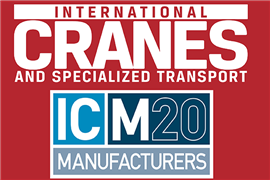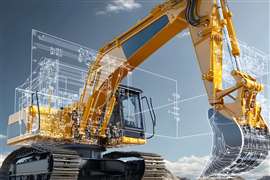“Hey, excavator, dig me a pool”: Bobcat CEO on autonomy, AI and ambition
26 June 2025
It tells you all you need to know about the journey that Doosan Bobcat has been on when, asked what markets in the world they are targeting, Scott Park, CEO, answers, “Honestly, we’re looking at all markets as a strong growth potential.”
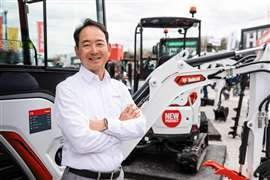 Scott Park was appointed CEO of Doosan Bobcat in 2013. Image: Doosan Bobcat
Scott Park was appointed CEO of Doosan Bobcat in 2013. Image: Doosan Bobcat
Park is strikingly articulate and during the 50 minutes of his time he gave Construction Briefing at Bauma Munich, he spoke with clarity about the changes at Doosan Bobcat and what its future may hold.
The product range has expanded vastly in the recent past for a company that has traditionally been associated with skid steer loaders and mini excavators. It is now much larger and includes telehandlers, material handling machines, grounds maintenance equipment and larger equipment, as well as an expanded range of its compact loaders.
Park says that three years ago the OEM saw an 80% increase in the new products that it was launching and while this breakneck speed has slowed somewhat, he estimates that the percentage of new products introduced this year will be around 35% of the total line-up.
Despite this rapid increase in new products there doesn’t seem to be an end in sight. “You could think, ‘oh, well now your portfolio’s pretty full’. Well, actually no. Not yet. We still have some targeted areas where we want to expand, and we still have pretty strong activity around new business development regarding additional product classes or categories.”
One of these categories is ‘heavy’ equipment, which the OEM has recently introduced in certain markets, such as North America, with Park saying there is room to expand their 20-30 tonne excavator range, as well as larger wheeled loaders.
A more balanced construction offering
Part of the reason Park has been so keen to expand the OEMs product range – apart from the fact that the more products produced the more sales you can make – is to limit the company’s dependence on one or two product categories as, if they see a downturn, the whole business is impacted. It is for similar reasons that his strategy is to grow in all areas of the world, which takes us back to his opening statement of all markets having strong growth potential.
He reveals that Doosan Bobcat used to lean heavily on North America for sales and – while it is still its most profitable region – the OEM now has three regions that are in excess of a billion dollars in sales, which means that the EMEA (Europe, the Middle East and Africa) and ALAO (Asia, Latin America and Oceania) have both seen strong increases.
“Over the last few years not only have we grown the overall business, but we’ve also increased the size of each of the regions. Going back to your question, we’re excited about growth everywhere, and the reason is because we have taken our product portfolio from ten years ago and doubled, tripled it, and maybe even quadrupled it.”
Talking about increasing a product range so much, as well as expanding growth in different regions is one thing – doing it is another matter. Park, who would not look out of place heading up one of the major tech companies in Silicon Valley, says that the strategy for this was to not overload one region.
For instance, the European teams were assigned the task of developing the compact wheeled loader while producing small articulated loaders (SAL) fell on the North American side. When it came to a backhoe loader, Doosan Bobcat acquired some intellectual property (IP) before they started building their own products.
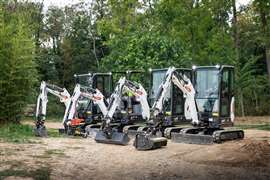 Park says that he is preparing the company for the next wave of technology, which includes automation. Image: Doosan Bobcat
Park says that he is preparing the company for the next wave of technology, which includes automation. Image: Doosan Bobcat
“Now you can imagine how you do so many things all at once, by using each region that we have, and each of the capabilities that we have. It was pretty well balanced, so that it wasn’t so overwhelming,” says Park before continuing with a knowing smile, “Now, some of the folks in my organisation will say it was overwhelming, and I’m sure it wasn’t easy and was complex.
“It really was the rocket boosters of taking a company that was forever a two plus billion-dollar company into reaching five, six, and seven billion. Those are numbers that were completely unheard of and there is a view to be in excess of ten billion within the next few years.”
Hey, Bobcat, build me a pool
As important as building up a wider portfolio of products, says Park, is preparing the company for the next wave of what the industry will look like through the further development of artificial intelligence and semi and fully automated processes.
Talking about autonomous systems he says, “That’s our inevitable future, right? Simply put, perhaps we should be able to sit down and say, ‘Hey, excavator, dig me a swimming pool to this schematic.’ And the excavator goes, ‘okay’ and then it sends me a message telling me when it is done. What are the building blocks to start getting those types of capabilities into our machines? You have to start with assisted operations and semi-autonomous operations.”
These semi-autonomous operations are increasingly common in construction equipment so, to use Park’s parlance, the building blocks are there. Any future machine would need to be – at the start at least – a single purpose piece of equipment. Doosan Bobcat is already testing autonomous lawn mowers and compact track loaders, and Park says they are taking their learnings and building a technology stack that can be used for future products.
Track loaders are tool carriers, they have a whole host of different attachments that can be used for different jobs, so will be harder to automate hence the need for building blocks to be in place.
“There’s a lot of applications and a lot of different situations that we have to plan for to build that software [for tracked loaders]. Well, that’s going to take forever, right? But we can start getting the building blocks together from those simpler machines, such as autonomous forklifts.
“That’s more complex than a mower, but a lot less complex than a loader. And we built that out using AI. And we start putting together the different building blocks to get us there, one of which is telematics. We’re going to have a significant leap forward in our capabilities on how we deliver telematics and what capabilities we have in our machines. That capability is going to lead to our ability to program machines on the fly.”
Park says that he imagines a future where someone goes to rent a piece of equipment to perform a task – such as digging a trench – and on the equipment is an app that will enable the machine to do the task autonomously for a certain cost.
“You can imagine the different possibilities, whether it’s planting a tree or putting up fences, and you could get semi-assisted operations over the air, that updates your machine to be able to do that,” he says, becoming increasingly enthused.
“That becomes more and more autonomous and something that now you can just talk to your machine and ask it to do that function. And we build that library up, and we present that to the customers for use.”
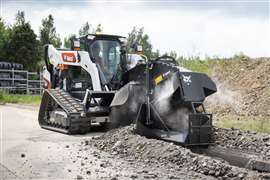 The Bobcat T86 is said to be one of the most powerful compact track loaders on the market. Image: Doosan Bobcat
The Bobcat T86 is said to be one of the most powerful compact track loaders on the market. Image: Doosan Bobcat
How do you run a marathon?
When Park talks about the changes he has helped implement, he equates it to running a marathon – the way you get through it is one step at a time.
“When you’re in the middle of a marathon, you don’t know that you’ve done something amazing. You don’t know that it’s something that now puts you into a different league. Because we’ve just done it step by step. And the growth comes in and you adjust to it, and you become more mature as you go through the process,” he says.
“Only when you turn around,” he says, “do you realise – we’ve tripled the size of the organisation. Our portfolio is huge. We’ve moved up the Yellow Table. These are tremendous things.” Park adds that his focus now is on creating a company where people build their long-term career. “Why wouldn’t they want to be in this company for the next five, ten, twenty years?”
That long-term mindset – building a company that not only grows but inspires its people to stay and innovate – appears to underpin Park’s approach. Whether it’s through expanding product lines or laying the groundwork for autonomous equipment, the transformation of Doosan Bobcat is being guided by both ambition and long-term strategy and, just like running a marathon, it is happening one step at a time.
STAY CONNECTED


Receive the information you need when you need it through our world-leading magazines, newsletters and daily briefings.
CONNECT WITH THE TEAM









